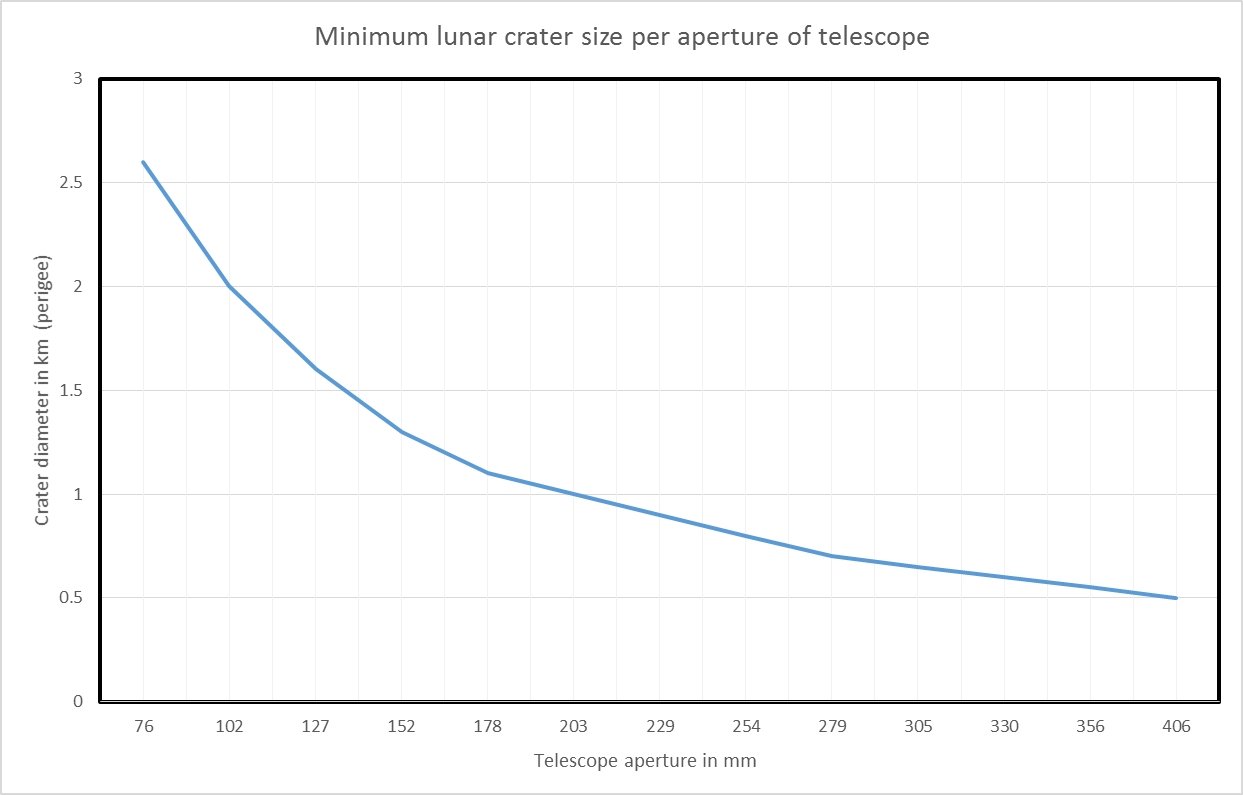This question bugged me after it was said on the old Lunar Picture of the Day (now defunct), that one of Wes Higgins' images was showing features as small as a few hundred meters with his 18" telescope. So just what size craters would I be able to detect on the best night, with good alignment? I realized right off that this would be different for apogee and perigee. Nothing beats good seeing, which I rarely have, but the techniques of using today's high speed cameras to take thousands of images and then selecting the best for stacking and thus beating down noise and bad seeing, can make up for some of that.
Doing a little trigonometry, the table below shows the results. I've also portrayed the results graphically so you can find your own telescope's potential results. Things like lighting and crater diameter/depth ratios can make a big difference so there's a lot of "wiggle" room in this. Further, linear features such as rimae, can be seen at smaller sizes under the right conditions.
aperture crater diameters inches mm Dawes perigee apogee km mi km mi 3 76 1.52 2.6 1.6 3.0 1.9 4 102 1.14 2.0 1.2 2.2 1.4 5 127 0.91 1.6 1.0 1.8 1.1 6 152 0.76 1.3 0.8 1.5 0.9 7 178 0.65 1.1 0.7 1.3 0.8 8 203 0.57 1.0 0.6 1.1 0.7 9 229 0.51 0.9 0.5 1.0 0.6 10 254 0.46 0.8 0.5 0.9 0.6 11 279 0.41 0.7 0.4 0.8 0.5 12 305 0.38 0.7 0.4 0.7 0.5 13 330 0.35 0.6 0.4 0.7 0.4 14 356 0.33 0.6 0.3 0.6 0.4 lunar perigee = 356410km = 221373mi lunar apogee = 406740km = 252634mi
